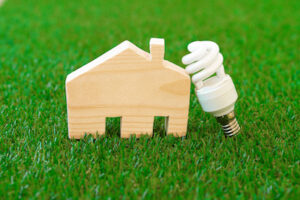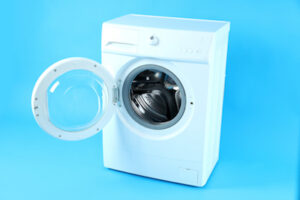6 Tips for Creating a Sustainable and Eco-Friendly Rental Home
In recent years, there has been a growing awareness of the impact that human activity has on the environment. This has led to a greater emphasis on sustainability and eco-friendliness in many areas of our lives, including the homes we live in. If you’re a landlord or property manager, you may be wondering how you can make your rental homes more environmentally friendly without breaking the bank. Fortunately, there are many small changes you can make that can add up to make a big difference. So, how can you create a sustainable and eco-friendly rental home?
Here are 6 tips on how to create a sustainable and eco-friendly rental home:
- Focus on Energy Efficiency (LED Lights, Smart Thermostats, etc.)
- Conserve Water (Low-Flow Fixtures, Water Efficient Appliances, etc.)
- Reduce Waste with Recycling, Composting, etc.
- Use Eco-Friendly Materials such as Green Building Materials
- Improve the Indoor Air Quality
- Encourage Green Habits for Tenants
In this article, we’ll explore six simple tips for creating a sustainable and eco-friendly rental home that both you and your tenants will appreciate. From energy-efficient upgrades to eco-friendly materials, we’ll cover a range of strategies that can help you reduce your environmental impact and save money on your energy bills.

Tip 1: Energy Efficiency
Creating a sustainable and eco-friendly rental home begins with focusing on energy efficiency. By implementing energy-efficient measures, you can reduce your property’s environmental footprint and lower utility bills for both you and your tenants. Here are three fantastic ways to improve energy efficiency in your home rent:
– LED Lighting
One of the easiest and most cost-effective ways to enhance energy efficiency is by replacing traditional incandescent bulbs with LED light bulbs. LEDs offer several advantages over incandescent bulbs:
- Energy Efficiency: LED bulbs consume significantly less energy, using up to 80% less than incandescent bulbs. This translates to lower electricity bills and a reduced carbon footprint for your property.
- Longevity: LEDs have a longer lifespan than incandescent bulbs, lasting up to 25 times longer. This means fewer replacements and less waste generated from disposing of burnt-out bulbs.
- Versatility: LED bulbs are available in various shapes, sizes, and color temperatures, making it easy to find the perfect lighting solution for every room in your rental property.
By making the switch to LED lighting, you’ll be taking a significant step towards creating a more energy-efficient and eco-friendly rental home.

– Energy Star Appliances
Another way to boost energy efficiency in your rental property is by upgrading your appliances to Energy Star-rated models. Energy Star is a voluntary program established by the U.S. Environmental Protection Agency (EPA) to help businesses and individuals save money and protect the environment through energy efficiency.
Energy Star-rated appliances are designed to consume less energy and water than standard models, without sacrificing performance or convenience. Some of the appliances you can upgrade include:
- Refrigerators and freezers
- Dishwashers
- Washing machines and dryers
- Air conditioners
- Water heaters
By upgrading to Energy Star appliances, you’ll not only be helping the environment but also reducing utility bills for you and your tenants.
– Smart Thermostats
Heating and cooling account for a significant portion of a home’s energy consumption. By installing smart thermostats in your rental property, you can help tenants manage their energy use more effectively and efficiently.
Smart thermostats offer several benefits over traditional thermostats:
- Remote Access: Tenants can adjust the temperature of their living space remotely using a smartphone or other internet-connected devices. This means they can make adjustments on-the-go, ensuring optimal comfort and energy efficiency.
- Learning Capabilities: Some smart thermostats can learn a user’s schedule and preferences, automatically adjusting the temperature to maximize energy savings without compromising comfort.
- Energy Monitoring: Many smart thermostats provide detailed energy usage reports, enabling tenants to understand their consumption patterns and make informed decisions about their energy use.
By installing smart thermostats, you can help tenants reduce energy waste, save money on utility bills, and create a more eco-friendly living environment.
Tip 2: Water Conservation
Water conservation is a critical component of creating a sustainable and eco-friendly rental home. By conserving water, you not only help preserve our planet’s precious resources but also reduce water bills and the environmental impact of your property. Here are three effective ways to save water in your rental home:
– Low-Flow Fixtures
One of the simplest ways to conserve water in your rental property is by installing low-flow fixtures, such as faucets, showerheads, and toilets. These fixtures are specifically designed to use less water than standard models without compromising performance.
- Low-Flow Faucets: Low-flow faucets use aerators to mix air with water, reducing the overall water flow while maintaining adequate water pressure. This can result in water savings of up to 60% compared to conventional faucets.
- Low-Flow Showerheads: Like low-flow faucets, low-flow showerheads also use aerators to maintain water pressure while reducing water consumption. They can help save up to 2 gallons of water per minute compared to traditional showerheads.
- Low-Flow Toilets: Low-flow toilets use significantly less water per flush than standard toilets, resulting in substantial water savings. There are two main types of low-flow toilets: dual-flush toilets, which allow users to choose between a full or partial flush, and single-flush toilets, which use a consistent amount of water for each flush.
By installing low-flow fixtures, you can help your tenants conserve water and reduce their water bills, making your rental property more attractive and eco-friendly.
– Water-Efficient Appliances
Another way to conserve water in your rental home is by choosing water-efficient appliances, such as dishwashers and washing machines. These appliances use advanced technologies and innovative designs to minimize water consumption without sacrificing performance.
- Dishwashers: Look for Energy Star-certified dishwashers, which use less water and energy than standard models. Some water-efficient dishwashers also feature soil sensors that can adjust water usage based on the level of dirt on the dishes, further optimizing water conservation.
- Washing Machines: High-efficiency (HE) washing machines use less water and energy than traditional top-loading models. They typically have a larger capacity, allowing tenants to wash more clothes per load, and often use a combination of high-pressure water jets and tumbling actions to clean clothes thoroughly while using less water.
By opting for water-efficient appliances, you’ll be conserving valuable resources and lowering your tenants’ water bills.

– Rainwater Harvesting
Rainwater harvesting is an innovative and eco-friendly way to conserve water and reduce the demand for potable water in your rental property. By collecting and storing rainwater, you can use it for various non-potable applications, such as irrigation and flushing toilets.
Here’s how to implement a rainwater harvesting system in your rental home:
- Collection: Install gutters and downspouts on your property’s roof to collect rainwater. Make sure to use screens or filters to prevent debris from entering the system.
- Storage: Use rain barrels or larger storage tanks to store the collected rainwater. Choose a storage solution that suits your property’s size and water requirements.
- Distribution: Set up a distribution system to use the stored rainwater for irrigation, flushing toilets, or other non-potable uses. This may include installing a pump and connecting the storage tank to your property’s existing plumbing system or using a hose and manual distribution method for irrigation.
By implementing a rainwater harvesting system, you’ll be reducing your property’s reliance on municipal water supplies and making a significant contribution to water conservation efforts.
Tip 3: Waste Reduction
Waste reduction plays a crucial role in creating a sustainable and eco-friendly rental home. By minimizing the amount of waste generated by your rental property, you contribute to a healthier environment, preserve valuable resources, and reduce the burden on landfills. Here are three tips to help you achieve waste reduction in your rental home:
– Recycling
Recycling is one of the most effective ways to reduce waste in your rental property. By providing recycling facilities for your tenants, you make it easy for them to recycle various materials, such as plastic, paper, glass, and metal. Here’s how you can set up an efficient recycling system in your rental home:
- Provide Recycling Bins: Place clearly labeled recycling bins in accessible locations throughout your property, such as the kitchen, garage, or communal areas. This will encourage tenants to recycle regularly and make it convenient for them to do so.
- Educate Tenants: Ensure your tenants understand the importance of recycling and know what materials can be recycled. Provide clear guidelines on how to sort and prepare recyclable materials, as local recycling programs may have different requirements.
- Coordinate with Local Recycling Programs: Research your local recycling programs and ensure that the materials collected from your property are properly disposed of and recycled. You may need to arrange for regular pickups or drop-offs at designated recycling facilities.
By implementing a user-friendly recycling system, you can help your tenants reduce waste and contribute to a greener planet.
– Composting
Composting is another excellent waste reduction strategy, as it allows your tenants to recycle their food waste and keep it out of landfills. By decomposing organic materials, composting creates nutrient-rich fertilizer that can be used to improve soil health and support plant growth. Here’s how to set up a composting system in your rental property:
- Choose a Composting Method: There are several composting methods to choose from, such as traditional composting, vermicomposting (using worms), or bokashi (fermentation). Select a method that best suits your property’s size and tenants’ preferences.
- Provide Composting Equipment: Depending on the chosen method, you may need to provide composting bins, worm bins, or bokashi buckets for your tenants. Ensure that the equipment is easy to use, properly ventilated, and has a secure lid to prevent odors and pests.
- Educate Tenants: Teach your tenants how to use the composting system, including what materials can be composted and how to maintain the compost pile or bin. Providing clear instructions and ongoing support will help ensure the success of your composting program.
By setting up a composting system in your rental property, you can reduce the amount of organic waste sent to landfills and promote a more sustainable lifestyle.
– Reusable Items
Encouraging the use of reusable items is another effective way to minimize waste in your rental home. By reducing the reliance on single-use plastics and disposable items, you can help protect the environment and conserve resources. Here are some ideas to promote the use of reusable items among your tenants:
- Provide Reusable Items: Consider supplying reusable grocery bags, water bottles, or food containers for your tenants. By making these items readily available, you make it easy for them to choose reusable options over single-use alternatives.
- Educate Tenants: Inform your tenants about the environmental impact of single-use plastics and the benefits of using reusable items. Share practical tips on how to incorporate reusable items into their daily routines and encourage them to adopt eco-friendly habits.
- Create Incentives: Offer incentives, such as discounts on rent or utility bills, for tenants who consistently demonstrate their commitment to using reusable items and reducing waste.
By promoting the use of reusable items in your rental property, you can significantly decrease the amount of single-use plastics and disposable items that end up in landfills or the environment, fostering a more sustainable lifestyle for your tenants.
Tip 4: Eco-Friendly Materials
Choosing eco-friendly materials for your rental home can make a significant difference in its sustainability. Here’s how:
– Green Building Materials
When renovating or building, opt for sustainable materials like reclaimed wood, bamboo, or cork. They’re not only better for the environment but also offer added benefits, such as improved insulation.
– Natural Cleaning Products
Encourage your tenants to use natural, eco-friendly cleaning products. They’re free of harsh chemicals, so they’re better for the environment and indoor air quality.
Tip 5: Indoor Air Quality
A healthy indoor environment is a must for an eco-friendly home. Here’s how you can improve indoor air quality:
– Houseplants
Add some lovely houseplants to your rental property. They’ll help purify the air by removing toxins and producing oxygen.
– Proper Ventilation
Make sure your rental home has proper ventilation to prevent the buildup of indoor pollutants. This includes maintaining clean air filters and providing exhaust fans in high-humidity areas like bathrooms and kitchens.

Tip 6: Encourage Green Habits
Finally, let’s help your tenants adopt green habits by providing information and incentives:
– Provide Information
Educate tenants about the eco-friendly features of the rental home and offer tips on how they can reduce their environmental impact.
– Offer Incentives
Think about offering incentives like reduced rent or utility bill discounts for tenants who consistently practice eco-friendly habits.
In Closing
Creating a sustainable and eco-friendly rental home is a win-win situation for both you and the environment. By focusing on energy efficiency, water conservation, waste reduction, eco-friendly materials, indoor air quality, and encouraging green habits, you’ll make a significant impact on the overall sustainability of your rental property while attracting eco-conscious tenants. So, why not start making these changes today?
